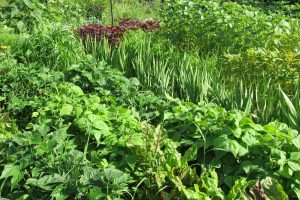The importance of soil pH

Gardeners frequently hear the term soil pH used when discussing the condition of garden soil. If you want to garden successfully, it is important to understand the importance of pH and know the pH of your soil, as it directly affects the availability of nutrients to plants.
According to the eXtension.org website, pH stands for “potential of Hydrogen.” It is a measure of hydrogen ions in the soil. Plant roots can only absorb nutrients after they have been transformed into these ionic forms and only certain pH ranges allow sufficient amounts of nutrients to be changed to ionic forms.
The pH scale ranges from zero to 14. A pH of 7.0 is considered neutral; a pH above 7.0 is considered alkaline; a pH below 7.0 is considered acid.
According to Cornell Cooperative Extension, a near neutral or slightly acidic soil is generally considered ideal for most plants. In general, a soil pH of 6.0-7.0 requires no special liming or acidifying practices to improve plant growth.
Outside that general ideal range, eXension.org says, nutrients are literally “tied up” and not usable by most plants.
In his book, The Best of Organic Gardening, Mike McGrath explains that the acidity or alkalinity of your soil is the result of the chemical nature of the rock from which it is derived and the partial or complete decomposition of vegetation.
Very acid soils with a pH of 4.0 occur in peat bogs covered by sphagnum moss; acid soils with a pH of 5.0 include peaty upland soils and rotted wood; slightly acid soil with a pH of 6.0 occur in gardens in non-limestone regions.
Alkaline soils with a pH of 8.0 occur in salt marshes, limestone soils and heavily limed soil.
It is possible to change your soil pH to bring it into the desirable range and improve the health of your plants. To lower soil pH, add sulfur; if it is acidic, ground limestone can be added to increase soil pH.
There are “at-home” soil acidity tests which you can purchase through gardening catalogs or garden centers. County Cornell Cooperative Extension offices also perform soil pH tests and can help you figure out exactly how much limestone or sulfur your garden needs to bring soil pH into the neutral range.
If you would like Cornell Cooperative Extension to test your soil, collect samples from several locations in your garden, digging down into the soil. Mix the soils together and make sure the soil sample is dry before you take it to the Extension office. If you have a large yard or garden, you may want to submit samples from several locations as pH can vary.
Fall is a great time to test your soil because you can make adjustments as plants die back and the soil will have the time it needs for changes in acidity to take place before the next growing season.
Depending on your landscaping/gardening goals, you might decide not to adjust your soil pH. You can select plants which do well in your soil as it is.
According to The Best of Organic Gardening, plants which prefer acid soil include azalea, blackberry, blueberry, radish, spruce, rhododendron, marigold, oak and yew. Plants which prefer alkaline soil include asparagus, beet, iris, nasturtium, rhubarb, squash and sweet pea.





